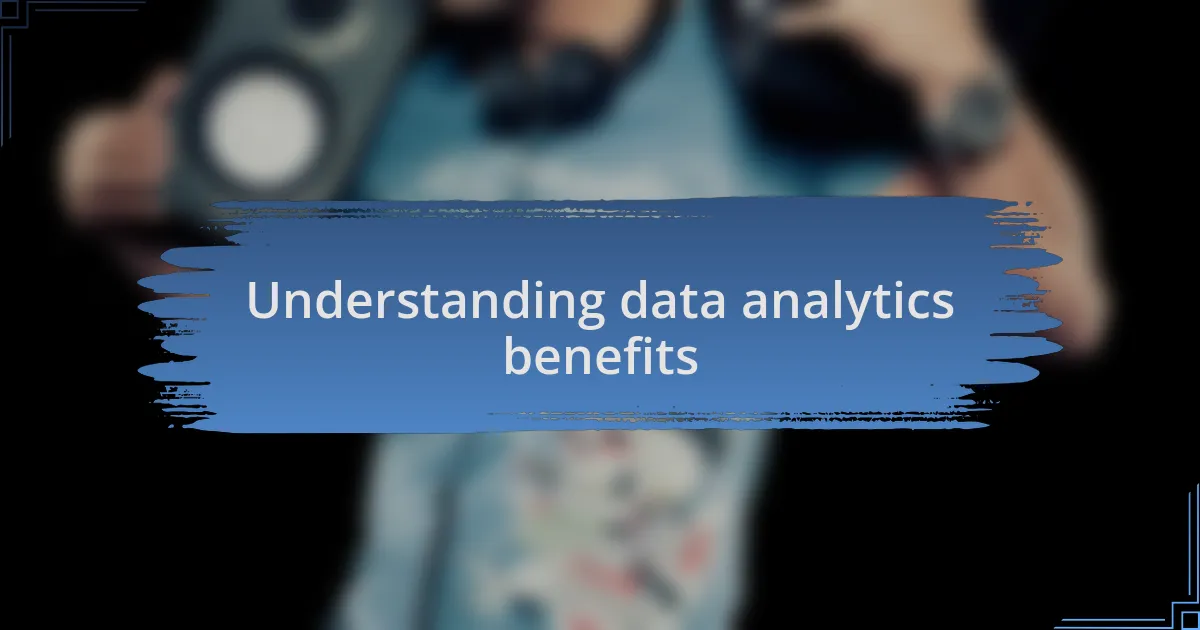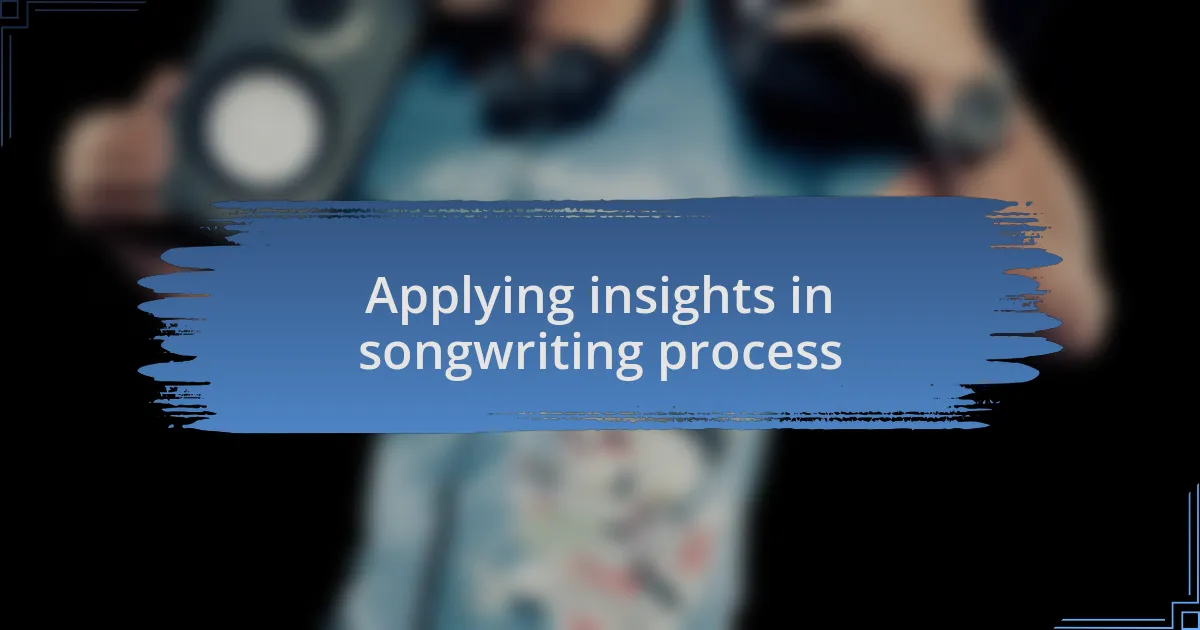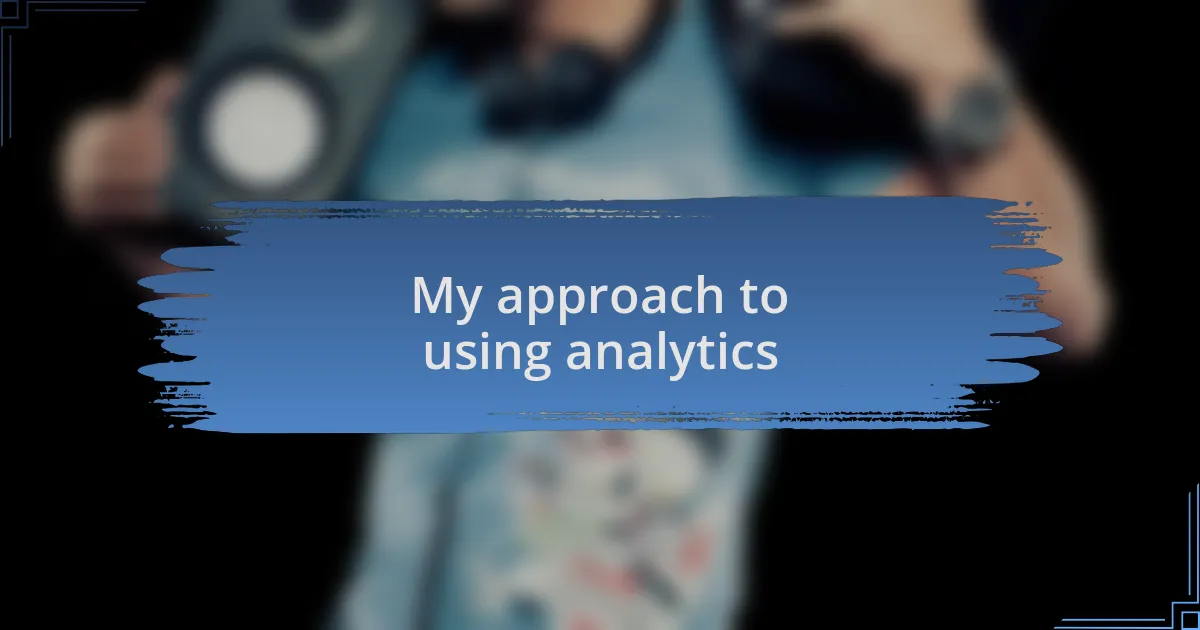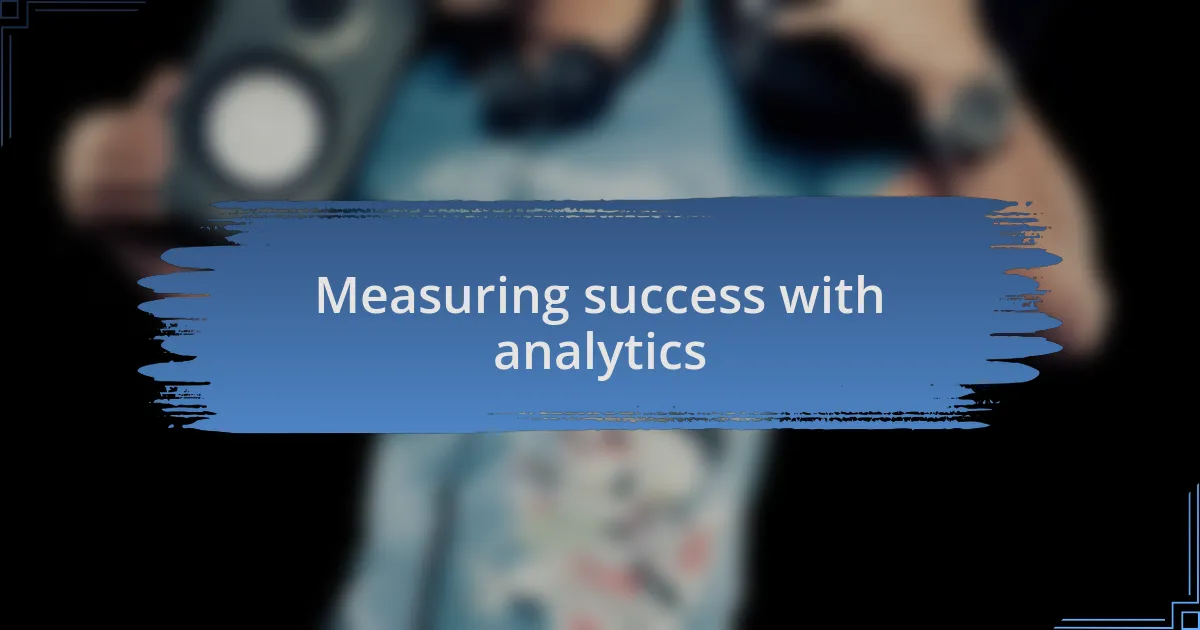Key takeaways:
- Data analytics provides valuable insights into listener preferences, enhancing the songwriting process and fostering emotional connections.
- Engagement metrics, such as listener retention and demographic data, guide artists in refining their music and expanding their audience.
- Incorporating audience feedback and analyzing successful elements helps create a collaborative and personalized music experience.
- Analytics serve as a compass for creativity, encouraging artists to explore new genres and storytelling techniques to connect with listeners.

Understanding data analytics benefits
Data analytics can transform the way I approach music creation by providing insights into what resonates with listeners. For instance, analyzing streaming data helps me uncover which melodies capture the audience’s attention, allowing me to craft more engaging hooks. Have you ever wondered why certain songs stick in your head? This connection between data and creativity can lead to impactful songwriting.
On a personal level, I remember dissecting the success of one of my tracks by diving into the demographics of my listeners. It shocked me to see how vastly different audiences responded to various elements in my songs. This experience truly illustrated the emotional power behind data— it’s not just numbers; it reflects real people and their preferences.
Furthermore, leveraging tools that track song performance peeled back layers of my creative process that I hadn’t considered before. Each piece of data told a story, guiding me toward not just what sounds good, but what inspires genuine connections. How often do we overlook the subtle cues from our audience? Understanding data analytics reveals how our music can evolve in harmony with listener preferences, making creativity a shared journey.

Key metrics for music creation
When I evaluate key metrics for music creation, I often focus on engagement rates across different platforms. For example, tracking how long listeners stick with a track can reveal which parts of a song truly resonate. It’s fascinating to reflect on my experience with a recent single; I noticed a steep drop-off after the first chorus. That insight pushed me to rethink the song structure entirely, making it more dynamic.
Another essential metric is audience demographic data, which goes beyond age and gender to include listening habits and preferences. One time, I discovered that my music was particularly popular among indie pop fans in a specific region. This revelation not only inspired new lyrical themes but also encouraged me to reach out to local bloggers and influencers, expanding my network in an authentic way. Have you thought about how your music could connect with niche audiences?
Lastly, I can’t emphasize enough the importance of social media interactions as a metric. By measuring likes, shares, and comments, I gain insight into what elements of my music provoke discussion or emotion. I still remember the day a fan shared a personal story about how one of my songs helped them during a tough time. Moments like that reinforce the power of data to enhance emotional connections, reminding me that behind every number lies a story waiting to be told.

Applying insights in songwriting process
When applying insights from data analytics in my songwriting process, I often revisit my earlier work to identify patterns. For instance, analyzing streams and playlist placements helped me realize that the songs I wrote during times of emotional upheaval often resonated more deeply with listeners. Have you ever noticed how the authenticity of your experiences can shape your music?
In my recent project, I utilized feedback gathered from online polls to guide my lyrical choices. I asked fans to vote on themes and concepts, which provided clear direction and ultimately made my audience feel like they were part of the creative journey. This collaborative approach not only enhanced my songwriting but also strengthened my bond with listeners. Isn’t it amazing how their input can inspire fresh ideas?
Another aspect I consider vital is the tempo and key signature analytics. Once, I experimented with a song in a major key instead of my usual minor, based on data showing that upbeat tracks were performing better in my genre. The shift turned out to be a game-changer; it brought a brighter vibe to my album and sparked a wave of new listeners. How often do you explore outside your comfort zone, guided by data?

My approach to using analytics
When it comes to my approach to using analytics, I view it as a compass guiding my creative expedition. For example, I once analyzed song completion rates and noticed that I struggled with tracks that didn’t initially resonate with me. It was a lightbulb moment! I learned to trust my instincts more when the data indicated a lack of engagement. Have you ever wondered if your hesitation stemmed from a disconnect between your vision and the metrics?
Incorporating analytics also means diving into listener demographics. I once discovered a significant portion of my audience enjoyed songs with storytelling elements. This insight encouraged me to craft narratives that many can relate to, creating an intimate connection through shared experiences. Isn’t it fascinating to think how demographics shape not just who listens to our music, but how we write it?
Finally, I believe in challenging myself with the analytics I gather. Recently, I set a goal to explore genres that were outside my usual style based on insights pointing to what was trending in music. This approach led to a fusion of styles in one track that surprised even me, blending elements from pop and folk. Have you ever pushed your boundaries based on data and discovered something unexpected?

Measuring success with analytics
Measuring success with analytics involves deciphering the patterns that emerge from listener interactions. For instance, after releasing a single, I tracked the streaming numbers and noticed a spike in plays after I engaged with fans on social media. This taught me how important it is to connect with my audience and leverage those touchpoints. Have you ever considered how a simple post could amplify your song’s reach?
Another key metric I focus on is retention rate. I remember analyzing the drop-off points in my songs—identifying where listeners paused or skipped. It hit me that those moments often aligned with sections that lacked emotional depth. This realization pushed me to invest more effort into crafting engaging hooks. Isn’t it intriguing how analytics can reveal not just what listeners like, but also where I need to improve?
I also keep an eye on the feedback from various platforms, especially in comments and reviews. One time, a listener mentioned how a particular bridge in my song resonated with their personal story. That sentiment motivated me to dive deeper into that aspect of songwriting. How could understanding individual reactions through analytics shape our future creations?